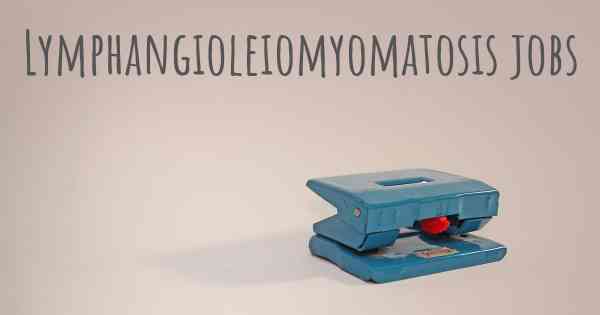Can people with Lymphangioleiomyomatosis work? What kind of work can they perform?
See how people with experience in Lymphangioleiomyomatosis give their opinion about whether people with Lymphangioleiomyomatosis can work and what kind of jobs are more appropriated for people with Lymphangioleiomyomatosis

Can people with Lymphangioleiomyomatosis work?
Lymphangioleiomyomatosis (LAM) is a rare lung disease that primarily affects women. It is characterized by the abnormal growth of smooth muscle cells, which leads to the formation of cysts in the lungs. LAM can cause a range of respiratory symptoms, including shortness of breath, coughing, and chest pain. As with any chronic illness, the impact of LAM on an individual's ability to work can vary depending on the severity of the disease and the specific symptoms experienced.
Workability and LAM:
While LAM can present significant challenges, many individuals with the disease are able to continue working, at least in some capacity. The ability to work with LAM depends on several factors, including the stage of the disease, the rate of disease progression, and the individual's overall health and functional abilities.
Flexible work arrangements:
For individuals with LAM who experience more severe symptoms or have limitations in physical exertion, flexible work arrangements can be beneficial. These arrangements may include part-time work, working from home, or adjusting work hours to accommodate medical appointments and treatments. Flexible work options can help individuals with LAM manage their symptoms while still remaining productive in their chosen field.
Choosing suitable work:
When considering employment options, individuals with LAM should take into account their specific symptoms and limitations. Jobs that involve exposure to respiratory irritants, such as dust, chemicals, or fumes, may exacerbate respiratory symptoms and should be avoided. Similarly, physically demanding jobs that require heavy lifting or prolonged periods of standing may be challenging for individuals with LAM.
Office-based work:
Many individuals with LAM find that office-based work is well-suited to their abilities. Jobs that involve administrative tasks, data entry, customer service, or other sedentary roles can be a good fit for individuals with LAM who may experience limitations in physical exertion. Office environments typically have controlled air quality and fewer respiratory irritants, which can help manage symptoms.
Remote work:
Remote work or telecommuting can be an excellent option for individuals with LAM. It allows individuals to work from the comfort of their own homes, reducing exposure to potential respiratory irritants and minimizing the physical strain of commuting. Remote work also provides flexibility in managing medical appointments and treatments, as well as the ability to create a comfortable work environment tailored to individual needs.
Supportive work environments:
It is important for individuals with LAM to seek out supportive work environments that understand and accommodate their condition. This may involve discussing their needs with employers or human resources departments, educating colleagues about LAM, and advocating for necessary accommodations. Supportive work environments can help individuals with LAM manage their symptoms effectively and maintain their productivity.
Conclusion:
While Lymphangioleiomyomatosis (LAM) can present challenges in the workplace, many individuals with the disease are able to continue working. The ability to work with LAM depends on the severity of the disease, the rate of progression, and the individual's overall health. Flexible work arrangements, choosing suitable work, office-based or remote work, and supportive work environments can all contribute to the successful employment of individuals with LAM. It is important for individuals with LAM to consult with their healthcare providers and make informed decisions about their work capabilities based on their specific symptoms and limitations.








